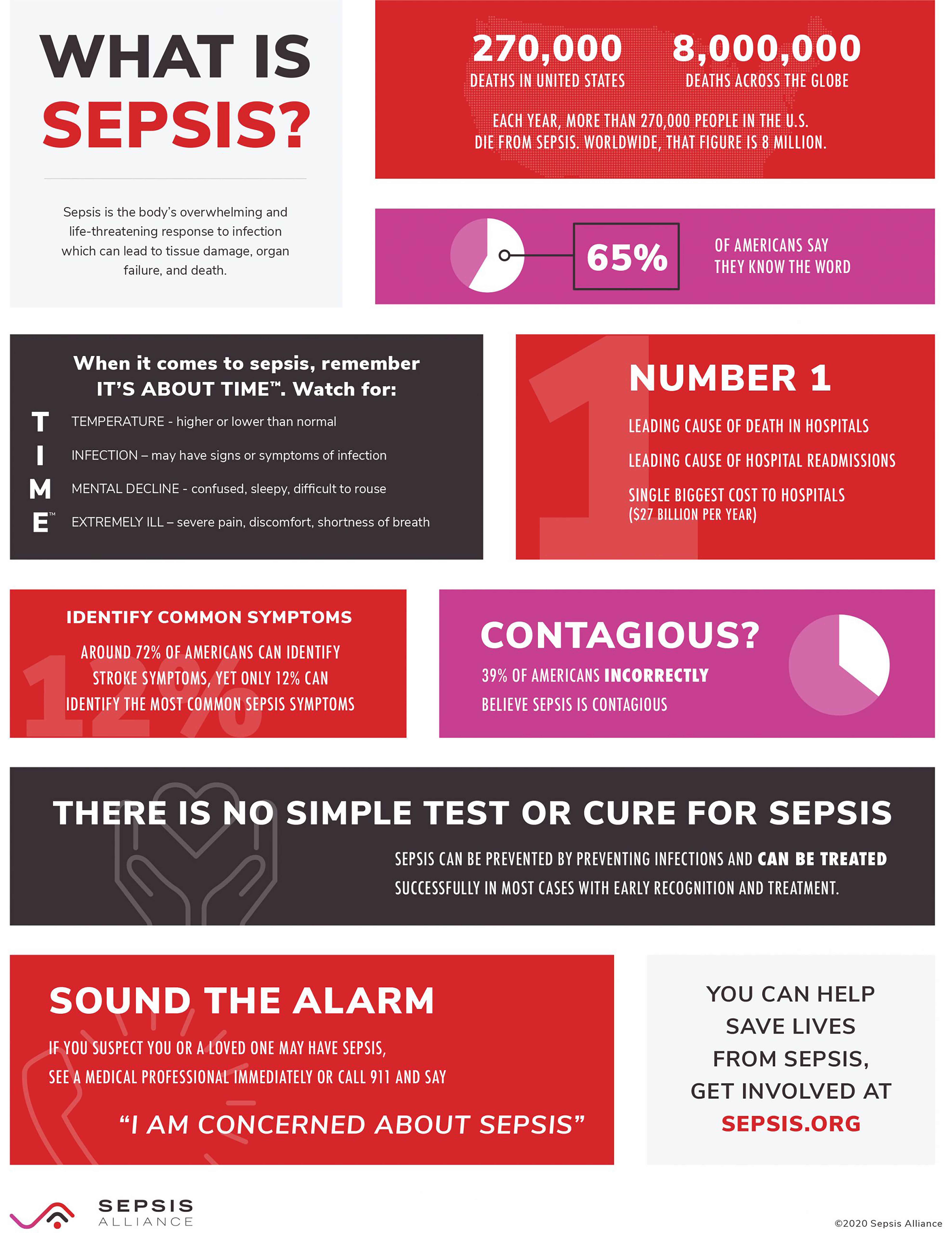Stop sepsis in its tracks
- Category: Health & Wellness
- Posted On:
- Written By: Deb Sutton, Sweetwater Memorial Marketing Director

Prevent infections from setting up camp in your body
Sepsis takes a life every 2 minutes.
Sepsis is the body’s extreme response to an infection. It is life-threatening and, without timely treatment, can rapidly lead to tissue damage, organ failure and death, according to the Centers for Disease Control and Prevention.
It is a complication of an infection that can be contagious, but sepsis is not itself contagious, the CDC says. Most sepsis is caused by bacterial infections, but it can be a complication of other infections, including viral infections, such as COVID-19 or influenza.
Memorial Hospital of Sweetwater County’s Sepsis Project Team has worked to get the word out on sepsis, said Gabrielle Seilbach, a nurse in the Quality, Accreditation and Patient Safety Department.
The team is promoting various ways the CDC and the Sepsis Alliance have outlined as ways to get ahead of sepsis. The vast majority of sepsis cases – as many as 92% – originate in the community, prior to hospitalization. Seilbach said that means it is important for patients to keep infections at bay.
Here are some ways patients can reduce the risk of sepsis:
- Prevent infections by taking good care of chronic conditions and get the recommended vaccines.
- Practice good hygiene by washing your hands and keeping cuts clean and covered until healed.
- Know the signs and symptoms of sepsis, including high heart rate or low blood pressure; fever, shivering or feeling very cold; confusion or disorientation; shortness of breath; extreme pain or discomfort; and clammy or sweaty skin.
- Act fast. Sepsis is a medical emergency.
The Sepsis Project Team has also worked to update all of the hospital’s employees on the latest information and research on how to curb sepsis, Seilbach said. The group began meeting early in the year with the main goal of continually improving MHSC’s sepsis rates and to educate workers hospital-wide.
The team includes Seilbach; Pathologist Dr. Cielette Karn; Mary Fischer and Robin Snowberger, laboratory; Megan Gilbert and Bethany Bettolo, nursing informatics; Pharmacist Tim Mickle; Noreen Hove, infection control; and registered nurses Brandy Systma, Shelly Lloyd, Sheridan Shultz, Ashliegh Swanson, Macayla Arrington, and Melissa Munoz.
“We meet monthly to discuss data, opportunities for improvement, and to learn to identify sepsis quickly,” Seilbach said. “In March, a nurse-driven protocol was implemented to help our MHSC nurses to identify sepsis. It allows the registered nurse to initiate time-sensitive labs and utilize their autonomy by doing other critical tasks and communicating effectively with the provider.
“The Sepsis Project Team has implemented multiple changes to help staff improve their understanding of and compliance with sepsis standards outlined by the Centers for Medicare & Medicaid Services,” she said.
Did you know:
- 80% of sepsis patients are 50 or older.
- For every hour treatment is delayed, the risk of death increases by as much as 8%.
- Each year in the U.S. more than 1.7 million people develop sepsis, and at least 270,000 Americans die as a result.
- More children die of sepsis than pediatric cancers.
- Some of the symptoms in children include, the child feels abnormally cold to the touch; looks mottled, bluish or has very pale skin; has a rash that does not fade when pressed; is breathing very fast; has a convulsion (seizure); or is very lethargic or difficult to wake up. In children younger than 5, symptoms also include not eating, vomiting repeatedly and not urinating in 12 hours.




